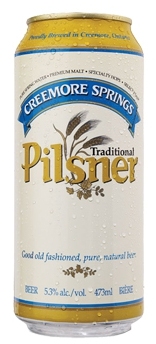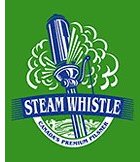This article was originally written in May 2007 for the food & drink website Taste T.O., and republished here in October 2011 (but back-dated to match the original publication date) after Taste T.O. was shut down and taken offline.
 Back in 1987, just as Canada’s modern craft brewing scene was kicking off, a small brewery called Creemore Springs opened in their namesake town of Creemore, Ontario. Unlike most of the other microbreweries launching around the same time, they decided to concentrate their efforts on a single brand, Creemore Springs Premium Lager.
Back in 1987, just as Canada’s modern craft brewing scene was kicking off, a small brewery called Creemore Springs opened in their namesake town of Creemore, Ontario. Unlike most of the other microbreweries launching around the same time, they decided to concentrate their efforts on a single brand, Creemore Springs Premium Lager.
This flavourful lager with a rich amber colour has been praised by beer drinkers and writers from around the world, and is often listed with Brooklyn Lager and Samuel Adams Boston Lager as being a landmark lager in the North American craft brewing scene.
It took ten years from the brewery to add a second beer to their line-up, the dark and malty Creemore Springs urBock which is available during the fall and winter months. Another ten years on, and they’ve decided to mark the end of their second decade with a second seasonal brew, Creemore Springs Traditional Pilsner (LCBO 53686, $2.55/473 mL), which will be available from May through October.
While this may seem like a redundant brand extension given that the original Premium Lager was said to be inspired by the classic Pilsner Urquell, it’s actually quite a different brew from its predecessor. To start with, the colour is a clear yellow-gold, capped with a good sized snow white head. The aroma has some similarity to the Premium Lager, likely due to the same or similar yeast strain being used, but it’s softer, with notes of bread, honeyish malt and zesty herbal hops. It’s medium bodied, with a slightly sticky finish, which causes it to be not quite as refreshing as it could be, but still pleasant. The flavour starts off sweet and somewhat delicate, and finishes with grassy, herbal hop notes that get quite bold and dry as it warms up.
Is it as good as the Premium Lager? That’s probably a matter of personal preference. Is it a good beer in general? Well, if you’re looking for a pilsner that is an equal to Urquell or Czechvar, you’ll probably be disappointed, as it just doesn’t have the same character as those classics. But put it up against some of the other European pilsners available at the LCBO such as Wernesgrüner, Radeberger and Staropramen, and it holds its own quite nicely. And at the very least, you’ll probably be getting a fresher beer for your money.

 As a beer lover in Ontario, I have lots of things to complain about. Most of those complaints are directed towards the
As a beer lover in Ontario, I have lots of things to complain about. Most of those complaints are directed towards the 

